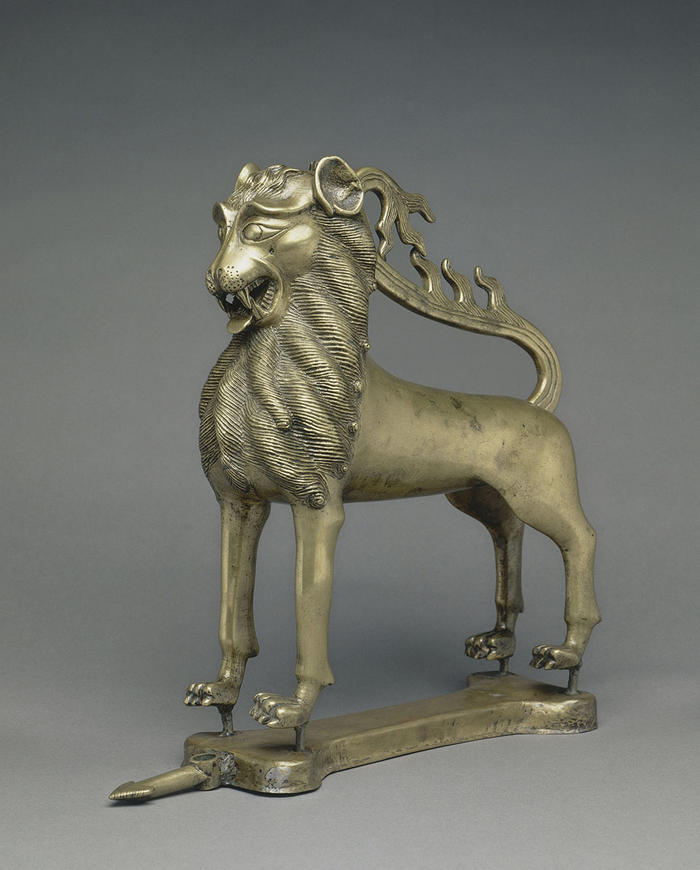The animal has an imposing appearance with its slender pose and curved tail bristling with flames. Look at its open mouth and sharp teeth! Its long eyes, highlighted by a very pronounced brow ridge, further accentuate its ferocious nature.
The object remains utilitarian: it’s filled through a hole hidden by a (now disappeared) valve at the top of the skull, while water is poured out through the lion's mouth. The tail acts as a handle and makes it easier to hold! However, the base to which it’s fixed isn’t original.
This item is part of a group of lions recognisable by their slender look and tail decorated with flames. They are attributed to the Nuremberg centre in Germany around 1400. The city was then an important centre for the production of bronze objects, and in particular aquamaniles, made using the lost-wax casting technique. These items, in various forms (fantastical animals, knights, etc.) must have had a symbolic function linked to the subject represented.
Detail 1:
The lion's mane is made up of strands decorated with lines, giving them a twisted appearance. This very particular motif, and in general the attention paid to chiselled details (carved in the metal), are characteristic of the decoration of aquamaniles produced in Nuremberg.
Detail 2:
The museum also has a second aquamanile. Dated as being from the 12th century when it was purchased in 1908, it's actually a fake! Its manufacturing method and several clumsy decorative elements give it away. However, some details are inspired by authentic objects, such as the monster-shaped handle and tail twisted around one of its legs.
Inv. A 286

The animal has an imposing appearance with its slender pose and curved tail bristling with flames. Look at its open mouth and sharp teeth! Its long eyes, highlighted by a very pronounced brow ridge, further accentuate its ferocious nature.
The object remains utilitarian: it’s filled through a hole hidden by a (now disappeared) valve at the top of the skull, while water is poured out through the lion's mouth. The tail acts as a handle and makes it easier to hold! However, the base to which it’s fixed isn’t original.
This item is part of a group of lions recognisable by their slender look and tail decorated with flames. They are attributed to the Nuremberg centre in Germany around 1400. The city was then an important centre for the production of bronze objects, and in particular aquamaniles, made using the lost-wax casting technique. These items, in various forms (fantastical animals, knights, etc.) must have had a symbolic function linked to the subject represented.
Detail 1:
The lion's mane is made up of strands decorated with lines, giving them a twisted appearance. This very particular motif, and in general the attention paid to chiselled details (carved in the metal), are characteristic of the decoration of aquamaniles produced in Nuremberg.
Detail 2:
The museum also has a second aquamanile. Dated as being from the 12th century when it was purchased in 1908, it's actually a fake! Its manufacturing method and several clumsy decorative elements give it away. However, some details are inspired by authentic objects, such as the monster-shaped handle and tail twisted around one of its legs.
Inv. A 286